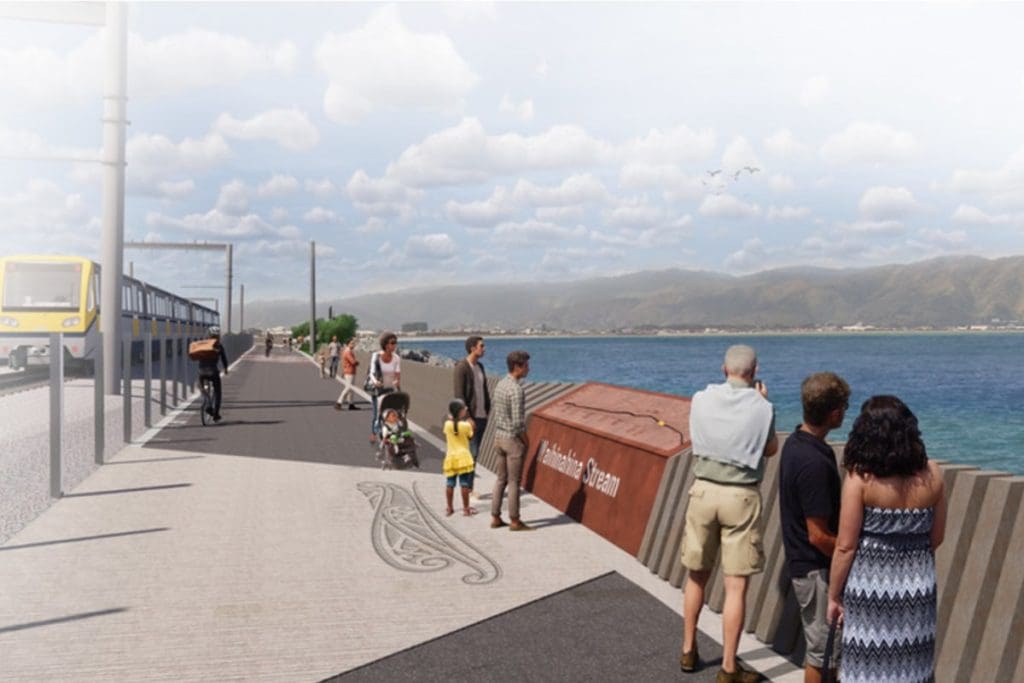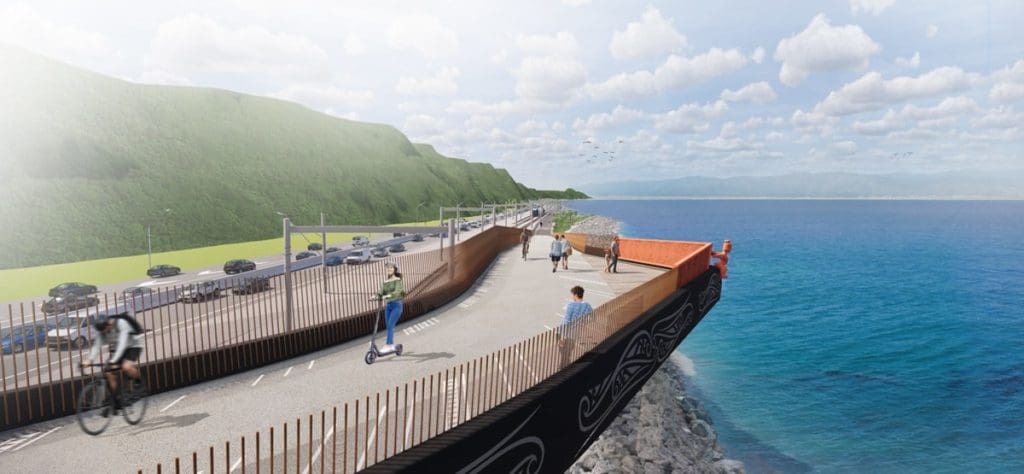Critical Missing Link Approved for New Zealand’s Capital

Wellington / New Zealand
New Zealand’s national capital of Wellington has a greater urban area population of 429,700 in 2020, but due to its extremely hilly terrain and limited land, being surrounded by ocean on three sides, only half of these people, 215,100 to be exact, live in the city of Wellington itself.
The other half live in nearby urban areas including Lower Hutt and Porirua.
Also due to this extremely rugged terrain, a single four lane motorway is the only main road that links Wellington to the rest of New Zealand.
Currently there is no separated cycle route along this main road, that has been built on a narrow strip of in some places reclaimed land, wedged between the mountains and the sea. The only space for cyclists is the shoulder of what is an extremely busy high speed road.
The main double track rail line also squeezes along this strip.
Despite the distance being relatively short at 4.5 kilometres, this extreme shortage of space has in part delayed a solution.
But on 6th February 2021 the Environmental Protection Authority approval for stage one.
The project was included in the COVID-19 Recovery (Fast-track Consenting) Act, meaning an expert consenting panel considered the project, working more quickly than a traditional consenting process.

Waka Kotahi Director of Regional Relationships Emma Speight says the decision gives certainty to the design of the project, which will provide a safer and more connected walking and cycling path between Wellington and Lower Hutt along the harbour’s coastal edge, away from highway traffic.
“Te Ara Tupua will make cycling, walking and running between Wellington and the Hutt Valley a safe and attractive option for more people. By 2030 we estimate around 2,200 weekday cycle trips on the new path – more than three times the number of cycle trips made on State Highway 2 today.
“This will be the Wellington region’s largest ever walking and cycling project, made even more complex by the need to work in the harbour’s coastal environment.
The project is expected to support approximately 330 jobs, counting those directly employed by the project and in businesses providing supplies and services to the project.
Ms Speight says the support of Wellington City Council, Hutt City Council, Greater Wellington Regional Council, KiwiRail and the Department of Conservation has greatly benefited the project.
If implementation funding is approved, the first enabling work on the project could begin in mid-2021. Work to complete the project will take approximately three years.
Part of this article was first published in the New Zealand Herald.
